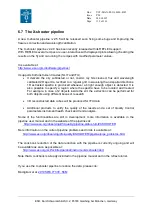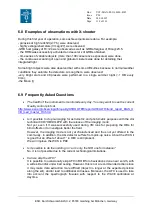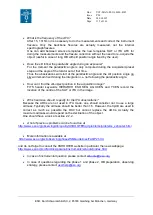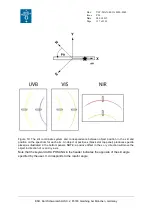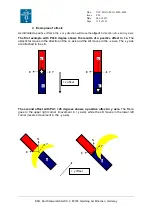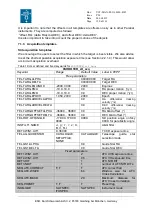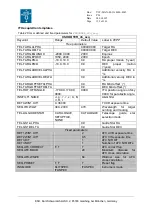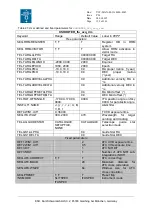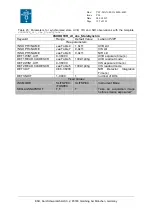
Doc:
Issue
Date
Page
VLT-MAN-ESO-14650-4942
P96
24.06.2015
111 of 161
ESO, Karl-Schwarzschild-Str. 2, 85748 Garching bei München, Germany
spectrum of the hot star. Some hot stars also have emission lines or are in dusty regions.
These stars should be avoided. The V-I colour of the star can be used as an indicator of
dust. For stars hotter than A0, it should be negative. And lastly, hot stars tend to lie near the
galactic plane, so there may be situations where there are no nearby hot stars.
Solar analogs, (for the purpose of removing telluric features) are stars with spectral type G0V
to G4V. These standards have many absorption lines in the IR, particularly in the J band.
The features can be removed by dividing by the solar spectrum that has been degraded to
the resolution of the observations.
In addition to hot stars and solar analogs, IR astronomers have used other stellar types as
telluric standards. For example, F dwarfs are commonly used.
Users should think carefully about which star is best for their program. Although the
Observatory will automatically observe a telluric standard for service programs, we cannot
guarantee that we will make the best choice, as this depends on the science users wish to
do. If you think that a specific spectral type suits your program better than others, we
recommend that you submit calibration OBs using the proper calibration templates see
sect.7.1.6 (in such case the time will be charged to your program), or to specify in the
readme file
of your program what kind of telluric star is needed.
Currently the telluric standard stars observed by the Observatory should have about 10000
ADUs in the middle of the brightest orders of each arms (S/N~50-100). The Observatory
does not provide observations of telluric standard stars with 5” slits. If this S/N is not enough
for the purpose of your programme, as previously we encourage you to submit your own
calibration OBs.
In addition,
up to P90
the telluric standard star observation is carried out with the stare mode
only in SM. This already uses 10% of the available time. The use of another mode instead of
the stare would lead to spend 25% time more in standard star observation or 12.5% of the
available time at UT2. Therefore if the user needs nodding mode or IFU-offset observations
instead of stare observations, we encourage him/her to submit his/her own OBs.
Starting from
P91
, the slit telluric standard stars will be observed in nodding mode instead of
stare and using the fast readout speed for the UVB and VIS arms. However, the binning for
those arms will match the ones of the science frames. This would allow to better correct the
sky lines/variations and the bad pixels.
Note that the telluric standard star observations are useless for the UVB arm (no telluric
lines) but are useful for the correction of telluric lines present in the VIS and NIR arms.
It is worth to mention that the Austrian in-kind contribution to ESO corresponds to a tool that
allows fitting and correcting the telluric lines. This tool is available at:
http://www.eso.org/sci/software/pipelines/skytools/

















